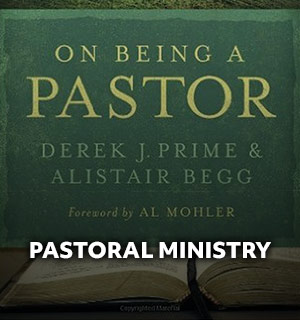
By Jeff Iorg
Most leaders think of change in future terms—a positive opportunity for circumstances to get better. Followers—while they may believe a major change will ultimately be good for them—tend to focus on the negative aspect of change.
They are concerned about what they are losing in the process. When any major change impacts followers, they feel a sense of loss expressing itself as grief.
When we announced the relocation at my first church, a man confronted me saying, “I can’t believe you’re taking my church away from me. My children were all baptized and married here. And now, you’re taking my church away from me.”
Leaving our former worship center meant he was losing the weekly, physical reminder of happy times in his family’s history.
By the time he said this to me, all his children had left the church and were not publicly committed to their Christian faith.
For this grieving man, leaving the old facility meant losing any semblance of shared spiritual heritage with his family.
Followers may also feel other aspects of personal loss during major change.
When a pastor announced a major staff realignment, one family was frustrated because the youth pastor their children had anticipated becoming their spiritual leader the following year was reassigned.
They lost confidence in their leaders and had their hopes for future spiritual growth and service dashed.
Another family struggled when their pastor announced a major building program, knowing their expected financial contribution would require sacrificial giving—meaning they would miss out on vacations and delay other personal purchases.
One volunteer was discouraged when her church made a major change in its preschool curriculum.
She was well-trained in the former methodology and the change meant she lost her expertise and had to learn new systems. She was angry because the time and money invested in learning the previous material felt wasted.
These losses, and others like them, produce the grief people feel when they go through major change in a ministry setting.
Loss Is Experienced as Grief
When people feel a profound loss, they go through stages or phases of grief. These have been defined and described in different ways by psychologists, ranging from five to eight different aspects of the process.
Most pastors learn about managing grief in the context of helping people cope with serious illnesses and death.
Wise leaders learn this breakthrough insight: going through a major organizational change and accompanying sense of personal loss produces a very similar grief process.
When people go through ministry changes, they feel a sense of loss, and express it through a grieving process similar to the death of a loved one.
While there are different ways to understand the grief process, a six-fold model is helpful for interpreting and managing grief during major organizational change.
These stages or phases of grief are shock, anger, denial, bargaining, exploration, and adjustment. They are experienced more as a spectrum of experiences than “steps.”
People move through, into and out of, and skip around these various phases while experiencing grief. They process losses at different rates—some quickly, some slowly, some methodically, and some haphazardly.
When going through organizational change, people grieve in multiple ways, with as many unique constellations of response across the grief spectrum as there are people involved.
These losses may not have the same magnitude as losing someone through death, but the way people process the losses is very similar.
Another aspect of shepherding people through organizational change is recognizing followers may be managing other losses simultaneously to the losses brought on by the major change in their ministry.
For example, my mother passed away a few months after we announced the seminary’s property sale and pending relocation. Life keeps happening—both to leaders and followers—while major ministry change is being implemented.
When major change is introduced in your organization, do not be surprised if people respond disproportionately to the loss.
They may also be experiencing loss at work, in their family, or in their personal lives, and projecting their combined sense of loss into your context.
What do these phases sound like when people express grief prompted by losses in a ministry organization?
Shock stammers, “I can’t believe this is happening. I don’t know what to say.” Anger blurts out, “This is ridiculous. Our convention doesn’t need a new building. It’s an ego trip for the leaders.”
Denial comments wistfully, “Well, you have only announced a pending sale. If it falls through, we will know God wants us to stay.”
Bargaining proposes, “If the seminary moves, can I continue to rent my apartment from the new owner? Can I commute and teach an abbreviated schedule?”
Exploration projects, “I can see some good in developing a new organizational plan. We might finally be able to get the help we need for our children’s ministry.”
Finally, adjustment celebrates, “This is the best thing we have ever done, and of course, I was for it all along!”
Decoding comments like these—hearing the meaning behind the words—is essential for wise leaders who manage transition well.
Leaders must show patience with these initial comments recognizing they are often motivated by grief—and do the pastoral work necessary to help people process their feelings as they adjust to the new normal in their ministry setting.
Managing Organizational Grief
Leading people through transition requires more than recognizing the grief process and lending a listening ear. Leaders must proactively address these issues with two primary initiatives for addressing grief.
Pastoral care
The first is providing pastoral care for people experiencing major change. Do not passively wait for them to ask for something they may not even know they need.
Create opportunities for followers to express grief and work through the feelings associated with processing the change. These may be as informal as hallway conversations or as formal as discussion or support groups.
Remember the person who confronted me and said, “I can’t believe you are taking my church away from me”?
Rather than defending the decision with facts and criticizing him for rejecting God’s plan, I replied, “You seem to really be hurting right now. Can I come by your house in a few days and talk about all this?”
He agreed, and a few days later, I visited him in his home. We talked about his family, his long-time participation in our church, and his agony at losing his “church home.”
He was a retired working man not accustomed to talking about his feelings.
He surprised both of us when he said, “You know pastor, when you announced the church was moving, it felt like someone died.” It was my first experience connecting loss and grief with organizational change.
This pastoral care incident became a spiritual marker, a learning moment shaping my understanding of leading people through transition.
Initiating pastoral care for people in transition can involve several action steps. Talking with individuals openly and patiently about their concerns is one step.
Another is sharing information repeatedly, recognizing grieving people do not receive or process information clearly.
A third step is creating dialogue opportunities for the community to talk among themselves openly and honestly. Talk through feelings, challenges, and faith-obstacles to a successful transition.
Murmuring is when followers discuss ways to undermine the change decision. Dialogue to discover mutual strength for making a successful transition is different.
The former is destructive; the latter is essential for healthy organizational change.
Parameters
The second initiative for leading through transition is creating parameters for followers to understand and interpret the major change, particularly its impact on them personally.
When a major change is announced, no leader can fully know all its implications or ramifications. Change always includes some uncertainties as an organization progresses toward a new normal.
Faced with these uncertainties, leaders can vacillate between two extremes—overpromising without substantiation or ignoring concerns and communicating nothing.
Since leaders cannot predict the future or control every aspect of a major change, a better approach is needed.
The solution is creating parameters for future decisions related to the major change which give followers a sense of safety.
Parameters—dates, times, procedures, and other safety-net information—help minimize anxiety during the transition. Some leaders chafe at the need for such assurances.
Leaders say, “Trust me, and it will all work out.” That is an arrogant wish based on a faulty assumption about the future.
Followers need organizational assurance, not personal platitudes. They know some leaders die, move to better positions, forget what they said in the past, or change their minds as situations evolve.
Since leaders know they do not have all the answers during a major change process, they are often reluctant to give out any information.
Tension exists between leaders who would like to share information they do not yet have and followers who want conclusions that are not yet known.
The solution is establishing parameters—guardrails on the major change process which give leaders time and flexibility to make good decisions—while also giving followers a sense of safety and control over their uncertain futures.

Jeff Iorg
Jeff is the president of Gateway Baptist Theological Seminary and the author of Leading Major Change in Your Ministry.











